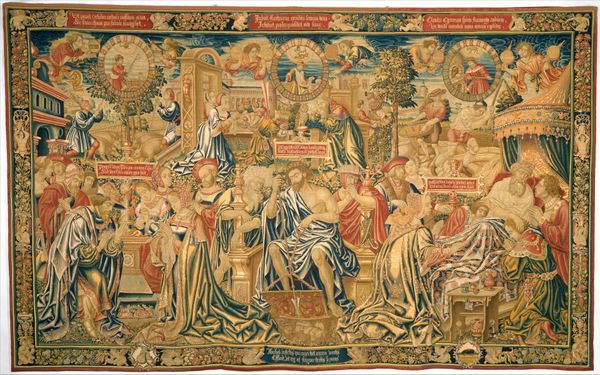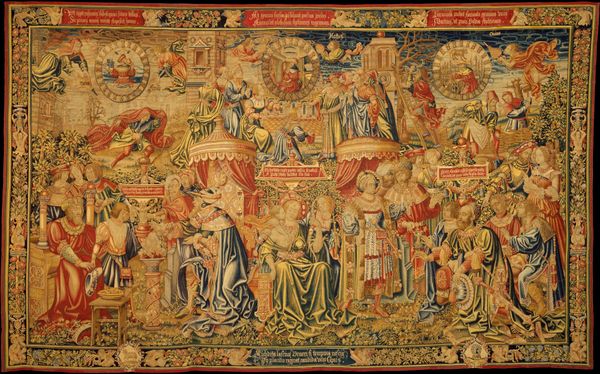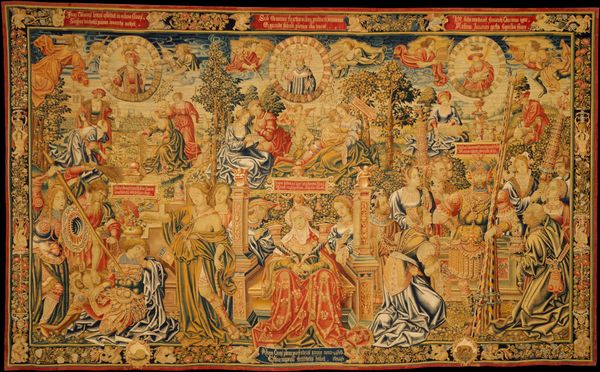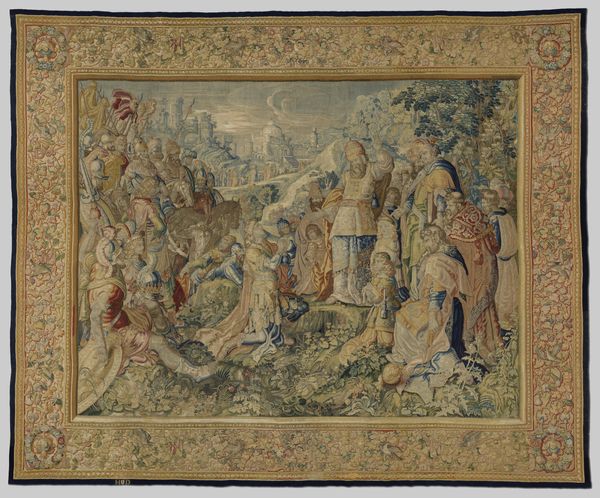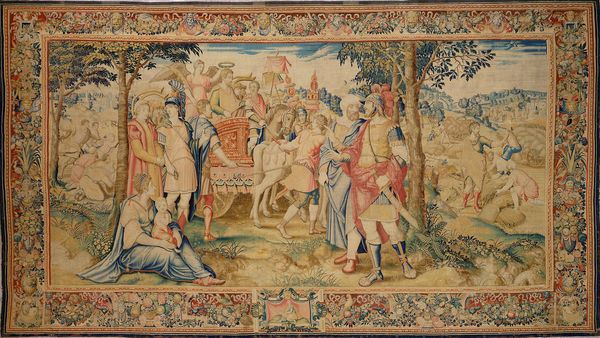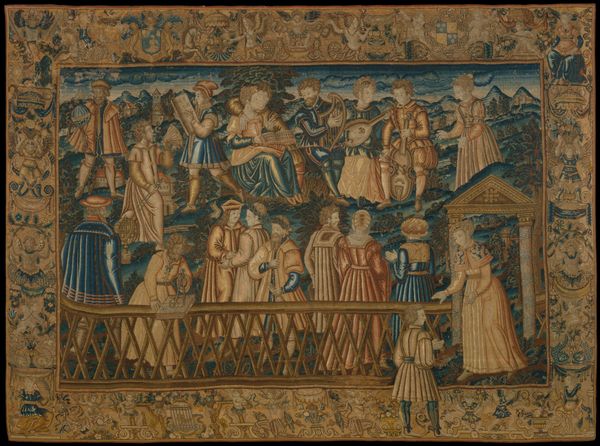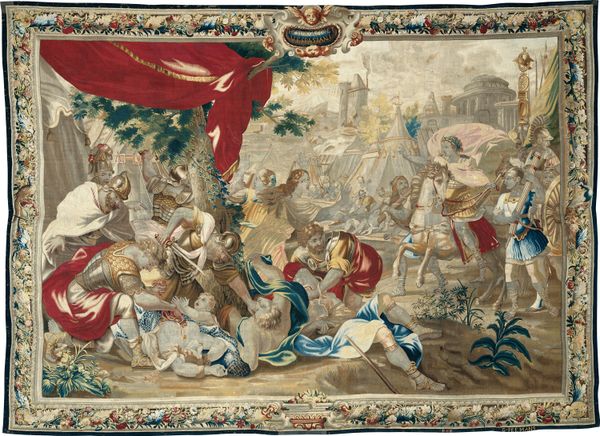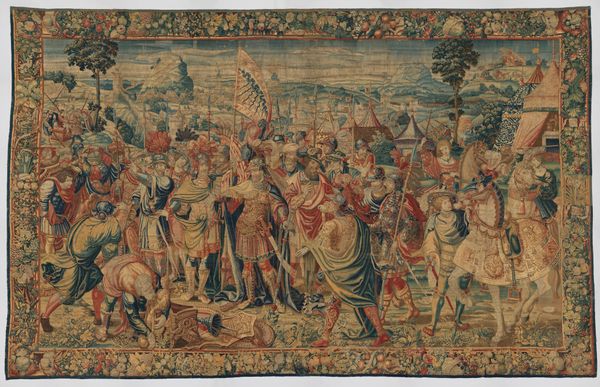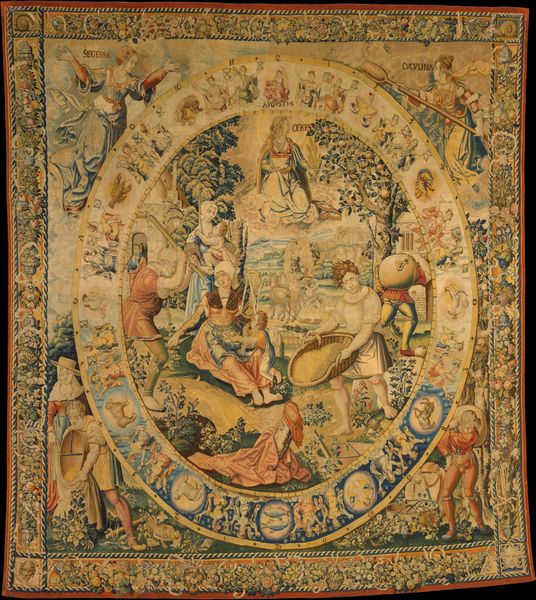
weaving, textile
#
medieval
#
allegory
#
narrative-art
#
weaving
#
textile
#
figuration
#
form
#
text
#
history-painting
#
northern-renaissance
Dimensions: 567.1 × 466.9 cm (223 1/4 × 183 1/2 in.)
Copyright: Public Domain
This is "Prudentia (Prudence)" a tapestry made by Bernard van Orley in the 16th century. The composition of this tapestry is intricately layered. We see a multitude of figures arranged in a hierarchical structure, leading the eye from the bottom to the top, towards the central figure of Prudence. The density of figures and architectural elements creates a rich, almost overwhelming visual experience. The tapestry’s materiality, woven with wool and silk, contributes to its detailed texture and subtle color variations. Orley uses classical and allegorical figures to explore ideas around virtue and moral governance, reflecting the intellectual climate of the Renaissance. Prudence, as a virtue, becomes a signifier for broader societal values and the importance of reasoned judgment. Note how the tapestry is not merely decorative, but also functions as a complex semiotic system. The arrangement of figures, the use of symbols, and the detailed craftsmanship invite us to decode its layers of meaning, engaging with questions of power, morality, and representation.
Comments
No comments
Be the first to comment and join the conversation on the ultimate creative platform.

